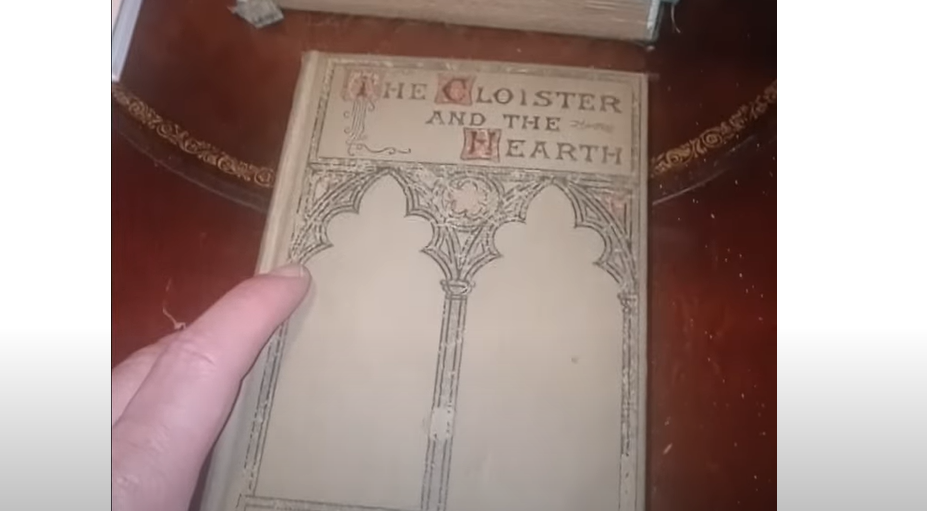The Cloister and the Hearth by Charles Reade is a literary classic that still feels remarkably fresh today. The story of Gerard Eliassoen, a young Dutch scribe whose life becomes a tumultuous reflection of devotion, duty, and heartbreak, is set in the fifteenth century. Reade’s prose is as dense, luminous, and remarkably versatile in tone as oil paint, and it is written with extraordinary detail and moral precision.
Gerard’s emotional journey from ardent lover to reluctant monk serves as the plot of the book. The story’s emotional current is driven by his love for Margaret Brandt, a graceful and quietly resilient woman. However, dishonesty steps in just as love is about to blossom. Greedily, Gerard’s brothers send a phony message claiming Margaret has died. This is the kind of misunderstanding that has driven many contemporary dramas, from Romeo and Juliet to Atonement, and it feels incredibly cruel yet profoundly human.
Grief-stricken, Gerard gives up his worldly goals and enters a monastery. His change from lover to friar seems especially representative of the ongoing struggle between passion and purpose in human existence. Reade presents his faith as a structure that is both sacred and oppressive, a form of imprisonment rather than salvation. One can feel the weight of moral absolutism in Gerard’s vows, which is a theme that artists and intellectuals still struggle with today when duty and desire collide.
Author Overview
| Category | Information |
|---|---|
| Author | Charles Reade |
| Born | June 8, 1814, Oxfordshire, England |
| Died | April 11, 1884, London, England |
| Occupation | Novelist, playwright |
| Genre | Historical fiction, social realism |
| Notable Works | It’s Never Too Late to Mend, Hard Cash, Peg Woffington, The Cloister and the Hearth |
| Originally Published | 1861 |
| Setting | 15th-century Europe (Holland, Germany, Italy) |
| Main Characters | Gerard Eliassoen, Margaret Brandt, Denys, Erasmus (their son) |
| Reference | Wikipedia – The Cloister and the Hearth |

In contrast, one of the most emotionally complex heroines in 19th-century fiction is Margaret. She stands for perseverance without resentment and tenderness without weakness when she is left alone with her child. Margaret was once hailed as Arthur Conan Doyle’s favorite heroine, and the novel’s portrayal of her death was hailed as one of the most poignant moments in literature. Her subdued strength serves as a particularly creative contrast to Victorian fiction’s melodramatic heroines.
The novel was loosely based on historical conjecture regarding the parents of the renowned Renaissance humanist Erasmus of Rotterdam. Reade turned an academic query into a comprehensive reflection on how intellectual genius can emerge from personal suffering by redefining Erasmus’s beginnings as the child of forbidden love. The idea that the hardships of one generation can lead to the enlightenment of another is a powerful narrative device that seems as relevant today as it did in 1861.
Contrasts—faith and temptation, love and self-control, truth and illusion—form the foundation of the moral framework of the narrative. Reade creates a tragic yet redemptive story through Gerard’s eventual realization that Margaret is still alive. A universal truth—that some loves, despite being limited by circumstances, remain unbreakable—is encapsulated by their reunion, which is framed by religious vows and emotional exhaustion.
Reade is a very careful craftsman. His depictions of medieval life, whether of a busy German tavern or a candlelit scriptorium, are incredibly effective at transporting the reader to a time that is both familiar and foreign. With the attention to detail of a historian and the passion of a poet, he paints everyday objects with remarkable accuracy, lending texture to everyday life. Conan Doyle, Rudyard Kipling, and Oscar Wilde were among the contemporaries who took notice of this dedication to realism.
Rudyard Kipling acknowledged that he wanted to write something “worthy to lie alongside it,” while Oscar Wilde once praised The Cloister and the Hearth Reade’s sincerity and scope, calling it Reade’s “one beautiful book.” The book’s remarkable endurance—its capacity to endure long after its last page—was recognized even by George Orwell, who was frequently critical of Victorian sentimentalism. Such praise from voices with such disparate temperaments highlights the novel’s exceptional capacity to go beyond literary trends.
Beyond literature, the novel had a cultural impact. Reade’s medieval imagery was transformed into early cinematic form in 1913 when director Cecil Hepworth turned it into a silent film. Many years later, Classics Illustrated changed it once more, transforming the story into a visual retelling that allowed a new generation to understand its moral dilemmas. These retellings demonstrate the story’s ongoing adaptability, which allows it to transport audiences across centuries and media.
The portrayal of conflicted humanity in The Cloister and the Hearth is what makes it so relevant today. The conflict between spiritual obligation and emotional authenticity in Gerard’s inner turmoil feels remarkably similar to contemporary attempts to strike a balance between one’s own fulfillment and social expectations. His ultimate acceptance of faith is not a sign of failure but rather of acceptance that love can endure in different forms.
Despite having been written over 160 years ago, Reade’s prose has a surprisingly modern sense of optimism. Although his characters endure great suffering, their tragedies show how resilient human love can be. He accomplishes a narrative elegance that few Victorian writers could match by depicting love as both brittle and timeless.
Reade’s artistic vision is distilled in Margaret’s death scene, which is arguably the novel’s most emotional peak: love transcends mortality despite being limited by faith. Not only is the hair that Gerard buried with her after her death sentimental, but it also has deep symbolic meaning, signifying the continuity of body and spirit, devotion and fate. Reade’s writing is incredibly clear in its emotional truth because of this attention to personal gestures.

